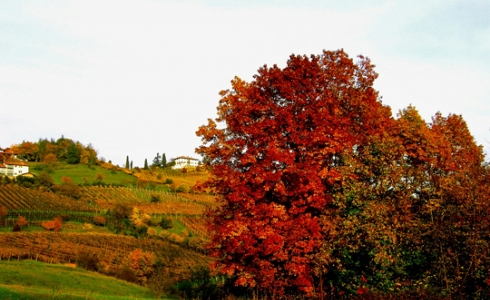

 Wine for Lobster?
Wine for Lobster?
We've found 35 wine(s) in our Italian Wine Guide which are good for Lobster.
Read more

So let’s just get one thing straight: at Lombardia (or Lombardy), Italy’s most populated and industrialized region, doesn’t exactly prioritize wine production. Actually, the combined output isn’t that significant, and what is produced is normally consumed locally, especially the wines from Oltrepò Pavese.
The lack of vineyards can also be explained purely geographically, as the Po plains’ large expanse are better suited to other crops than grapevines, and, at the same time, the large mountain areas and lakes, like Maggiore, Lugano, Como and Garda, occupy a large portion of the land area. Still, Lombardia can boast of having the mountainsides from wines of very high quality originate.
Like so many other places in Italy, Lombardia can trace its wine tradition back to pre-Roman times, where the area was inhabited by Etruscans, who had already at that point in time refined wine production techniques. Alas, they were chased out by the wild Gauls. From 568-774 A.D., during the Great Migration, the so-called Langobards (: long-bearded) settled in the region, which later gave the region its name.
There is plenty of historical evidence testifying to Lombardy’s wine-related significance. For example, the Roman poet, Virgil (70-19 B.C.E..), mentions the wines, and the artist Leonardo da Vinci, declared himself an admirer of ”Retico”, which many believe was a predecessor of the red wine, Sfurzat (or Sforzato) from the Valtellina area.
The three most significant wine zones are located partly in the lush Oltrepò Pavese in the southwest, partly in the Alpine north of Valtellina and finally east in the provinces of Brescia, Bergamo and Mantova, which boast 13 of the region’s total 19 DOC/DOCG wines. On the flat Po plains, the focus is on quantity, while the producers in the hilly areas demonstrate the greatest quality potential.
Besides being the capital of industry and finance, Milan is not only Italy’s most active wine market, but also the trendsetter in terms of wine and food. This strong influence has resulted in Lombardia becoming one of the nation’s leading producers of sparkling wines, the Spumante-types, which are often produced according to the Metodo Classico (or the Champagne Method: natural fermentation in the bottle), where Franciacorta DOCG and Oltrepò Pavese Metodo Classico DOCG are the most important zones for these types.
In terms of noteworthy wines with aging potential, we can mention the red wines from Valtellina, which develop over a decade or more, along with Oltrepò Pavese, Brescia and other eastern zone red wines, which often mature within 6-7 years.
Besides magnificent nature, with beautiful mountain lakes, valleys, plains and dramatic mountains, wine tourists will also discover some of Italy’s best and well-stocked enoteche (wine shops) in this region.
Read more about the wines from Lombardia by clicking i the top menu in the right side.
Italy extends over 10 latitudes – from continental climate to subtropical climate?